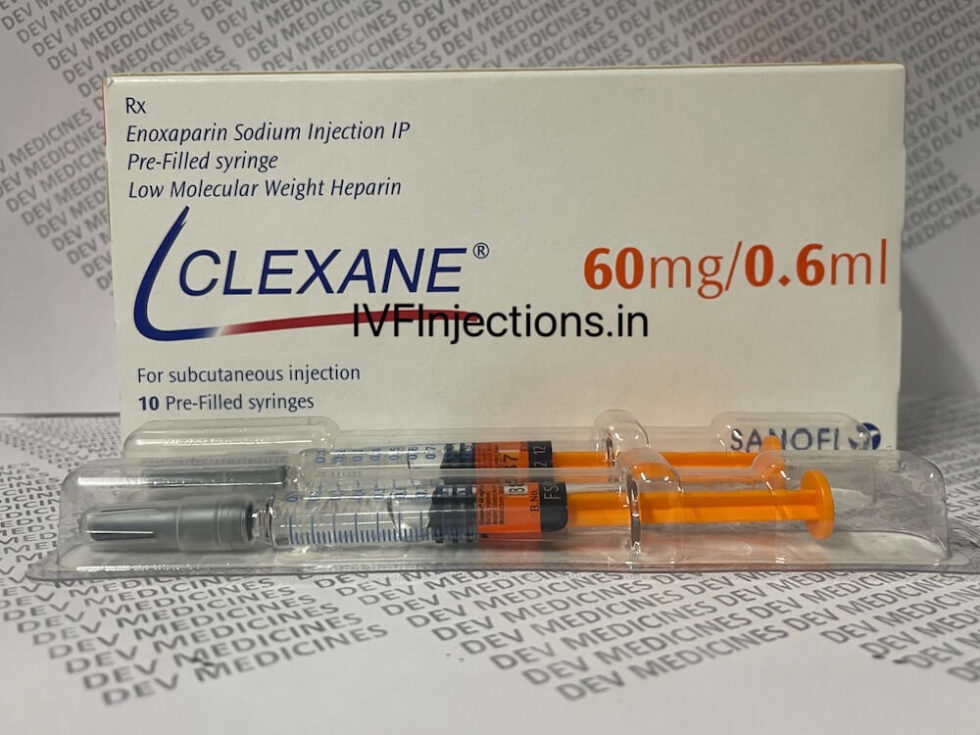Understanding Clexane 60 mg Injection: Uses, Dosage, and Precautions
Uses:
Prophylaxis of Deep Vein Thrombosis (DVT): Clexane is often prescribed to patients undergoing surgery, particularly orthopedic or abdominal surgery, to prevent the formation of blood clots in the veins of the legs or pelvis.
 Treatment of Deep Vein Thrombosis (DVT) and Pulmonary Embolism (PE): Clexane may be used in the treatment of established cases of DVT or PE, either alone or in combination with other anticoagulant medications.Prevention of Blood Clots in Certain Medical Conditions: Individuals with certain medical conditions, such as atrial fibrillation or cancer, may be at an increased risk of developing blood clots. Clexane may be prescribed as a preventive measure in these cases.
Treatment of Deep Vein Thrombosis (DVT) and Pulmonary Embolism (PE): Clexane may be used in the treatment of established cases of DVT or PE, either alone or in combination with other anticoagulant medications.Prevention of Blood Clots in Certain Medical Conditions: Individuals with certain medical conditions, such as atrial fibrillation or cancer, may be at an increased risk of developing blood clots. Clexane may be prescribed as a preventive measure in these cases.
Dosage:
The dosage of Clexane 60 mg injection varies depending on the indication for which it is prescribed and the patient's individual factors, such as weight and renal function. It is typically administered subcutaneously (under the skin) once or twice daily. The injection is usually given in the abdomen, alternating sides with each dose.
For prophylaxis of DVT in patients undergoing surgery, a typical dosage regimen may involve a single injection of Clexane 40 mg administered 2 hours before surgery, followed by once-daily injections of Clexane 40 mg or 30 mg for up to 14 days post-surgery.
For the treatment of established cases of DVT or PE, the recommended dosage of Clexane is typically higher, with initial doses ranging from 1 mg/kg to 1.5 mg/kg administered subcutaneously every 12 hours. The duration of treatment may vary depending on the severity of the condition and individual patient factors.
It is important for patients to follow the dosage instructions provided by their healthcare provider and not to adjust the dosage or frequency of administration without consulting a healthcare professional.
Precautions:
Bleeding Risk: Clexane is an anticoagulant medication and can increase the risk of bleeding, particularly in patients with certain medical conditions such as gastrointestinal ulcers or bleeding disorders. Patients should be monitored closely for signs of bleeding, Endofert H 2 Mg and the medication should be used with caution in individuals at increased risk of bleeding.
Renal Impairment: Clexane is primarily eliminated from the body by the kidneys, and its clearance may be reduced in patients with renal impairment. Dosage adjustments may be necessary in patients with impaired renal function to prevent accumulation of the medication and potential adverse effects.
Heparin-Induced Thrombocytopenia (HIT): Rarely, patients treated with heparin medications such as Clexane may develop heparin-induced thrombocytopenia, a potentially serious condition characterized by a low platelet count and increased risk of blood clotting. Patients should be monitored for signs of HIT, and treatment should be discontinued if suspected.

Comments
Post a Comment